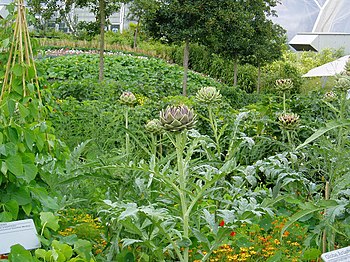 |
| Photo: Flickr |
Houseplants and herb gardens are well-known as common plants that are grown indoors. But they are not the only plants that can be grown indoors. By using the right containers and having the ability to mimic the ideal growing conditions you can also have an indoor vegetable garden. The benefits of having one go beyond the beautification of your home or the relaxation you get from gardening, but you can also pick your own vegetables right in your kitchen.
Carrots, tomatoes, and radishes are three of the easiest vegetable to grow indoors. Each grows differently and will need separate containers but with some research, this is not a problem. A south-facing window is the best source of natural sunlight for your vegetables to grow in. If you do not have the right exposure, you can invest in an artificial bulb to provide supplemental light.
As with any container you choose to grow plants in, making sure there is enough drainage is key. If your plants sit in too much water they are not going to survive. If the pots you choose do not have holes in the bottom be sure to put a layer of gravel or wood chips to allow the water to run out of the soil. The flip side of this is not to ensure the water does not run out too quickly either.
When choosing the types of vegetables to plant, follow the same guidelines as you would for outdoors. On the seed packets, it will give recommendations on when to plant, the amount of light and water that is needed and the spacing requirements. Tailor your water schedule according to the condition of the soil, make sure it doesn’t get too dry or stay too wet either.
By the end of the summer or early fall, you should be able to harvest the vegetables grown inside your own home.




